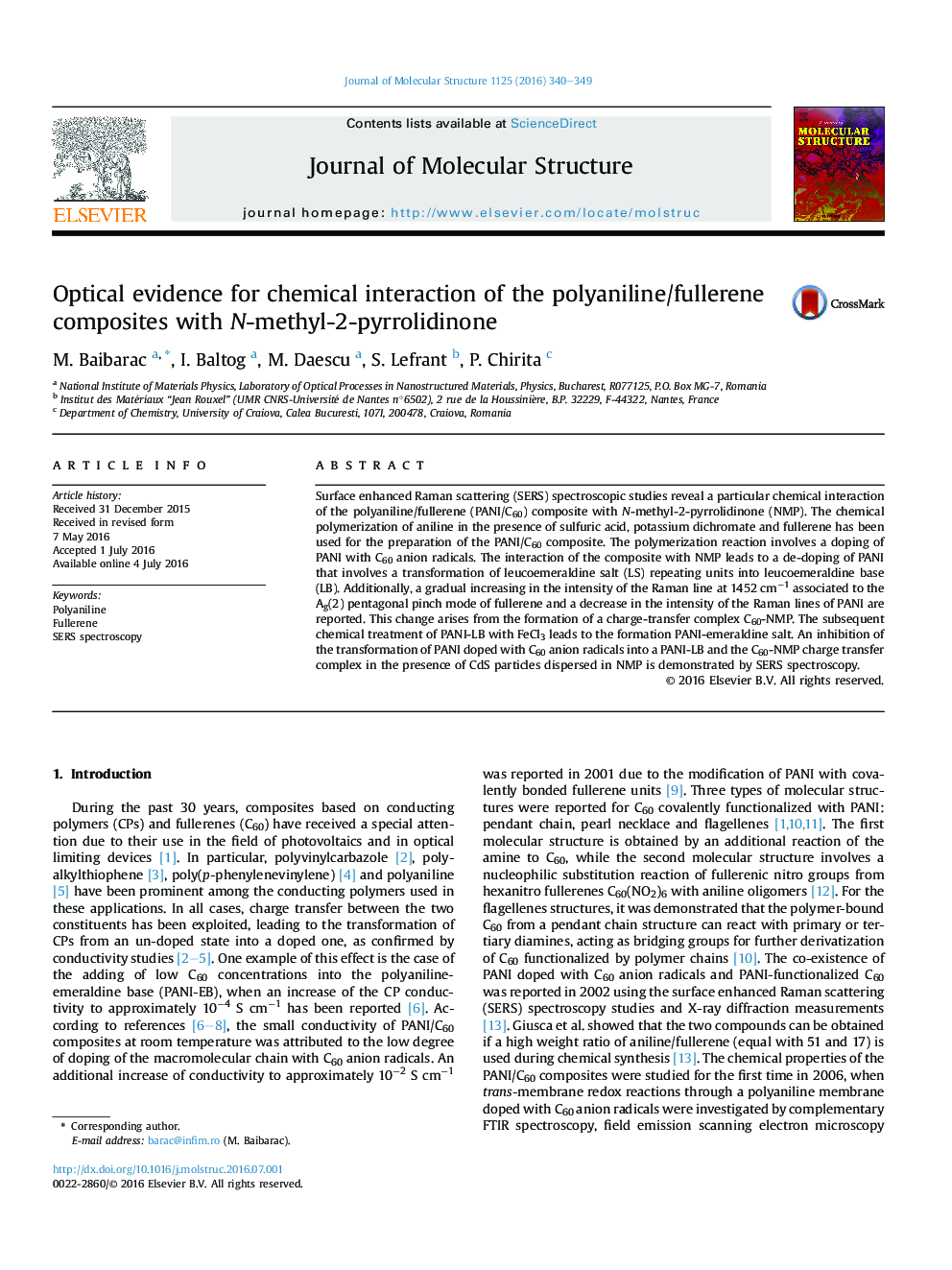| Article ID | Journal | Published Year | Pages | File Type |
|---|---|---|---|---|
| 1400946 | Journal of Molecular Structure | 2016 | 10 Pages |
•Interaction of composite with NMP involves a de-doping of polyaniline.•A charge-transfer complex C60-NMP results by the interaction of composite with NMP.•The inhibition of the composite - NMP reaction takes place in the presence of CdS.
Surface enhanced Raman scattering (SERS) spectroscopic studies reveal a particular chemical interaction of the polyaniline/fullerene (PANI/C60) composite with N-methyl-2-pyrrolidinone (NMP). The chemical polymerization of aniline in the presence of sulfuric acid, potassium dichromate and fullerene has been used for the preparation of the PANI/C60 composite. The polymerization reaction involves a doping of PANI with C60 anion radicals. The interaction of the composite with NMP leads to a de-doping of PANI that involves a transformation of leucoemeraldine salt (LS) repeating units into leucoemeraldine base (LB). Additionally, a gradual increasing in the intensity of the Raman line at 1452 cm−1 associated to the Ag(2) pentagonal pinch mode of fullerene and a decrease in the intensity of the Raman lines of PANI are reported. This change arises from the formation of a charge-transfer complex C60-NMP. The subsequent chemical treatment of PANI-LB with FeCl3 leads to the formation PANI-emeraldine salt. An inhibition of the transformation of PANI doped with C60 anion radicals into a PANI-LB and the C60-NMP charge transfer complex in the presence of CdS particles dispersed in NMP is demonstrated by SERS spectroscopy.
Graphical abstractFigure optionsDownload full-size imageDownload as PowerPoint slide
